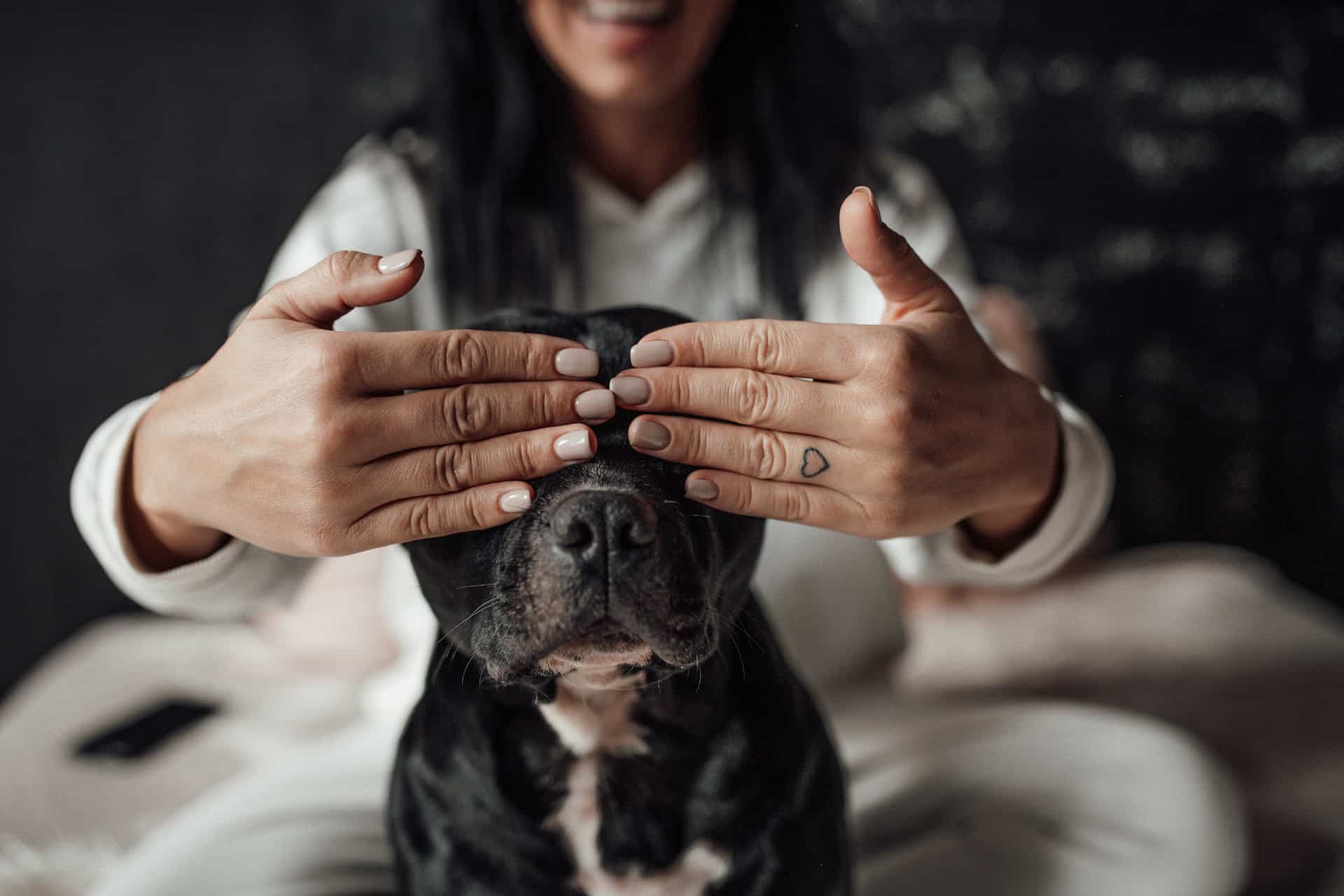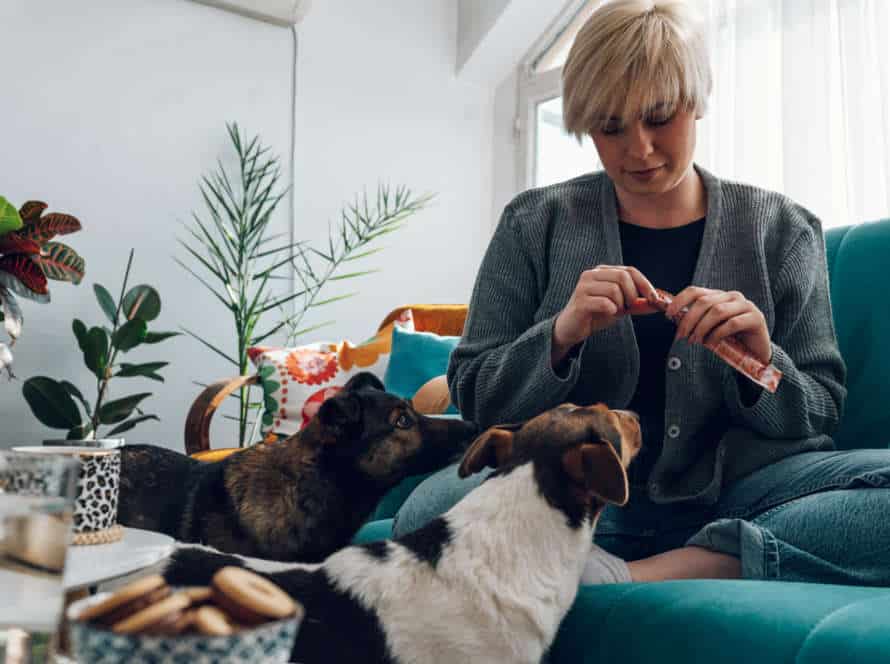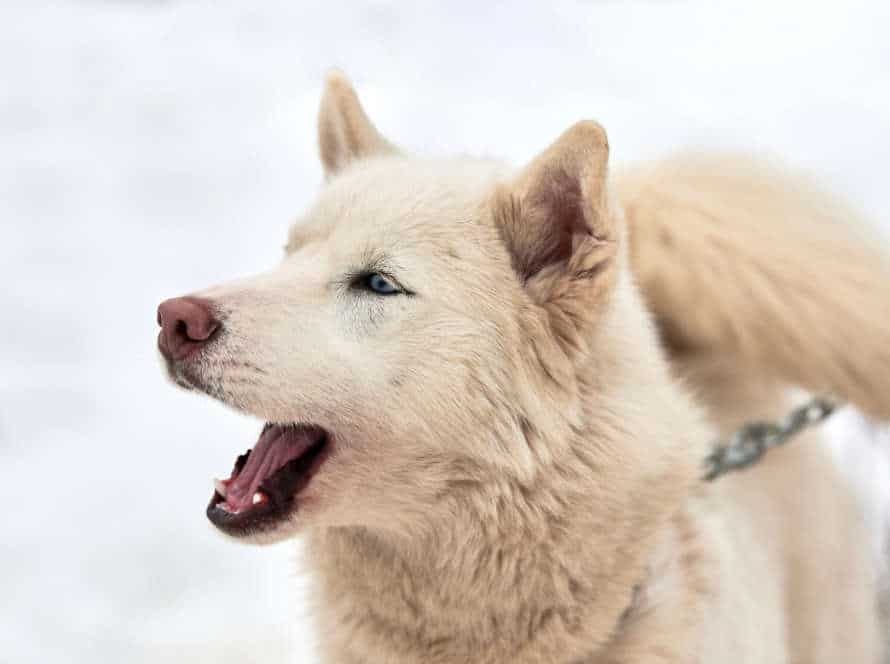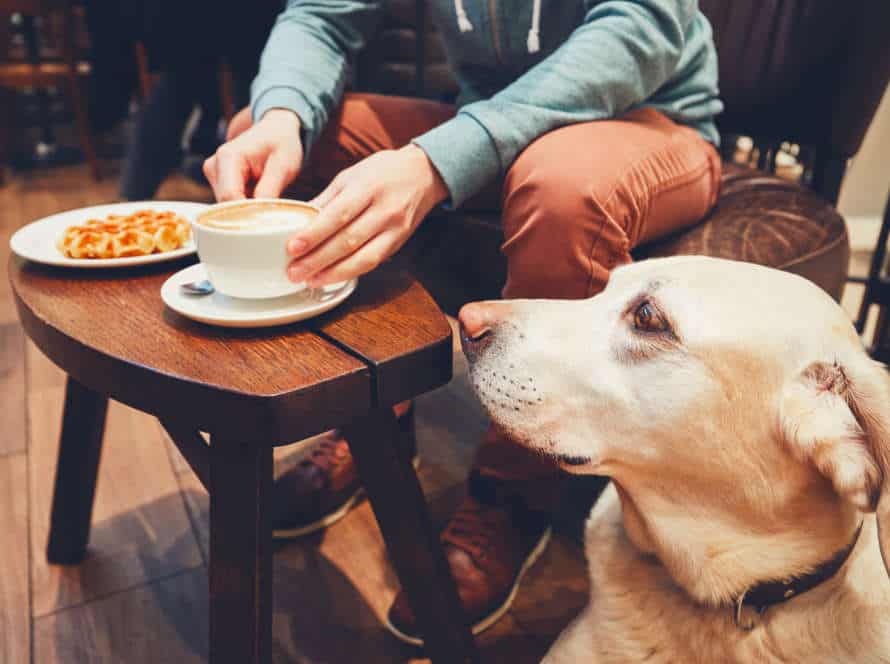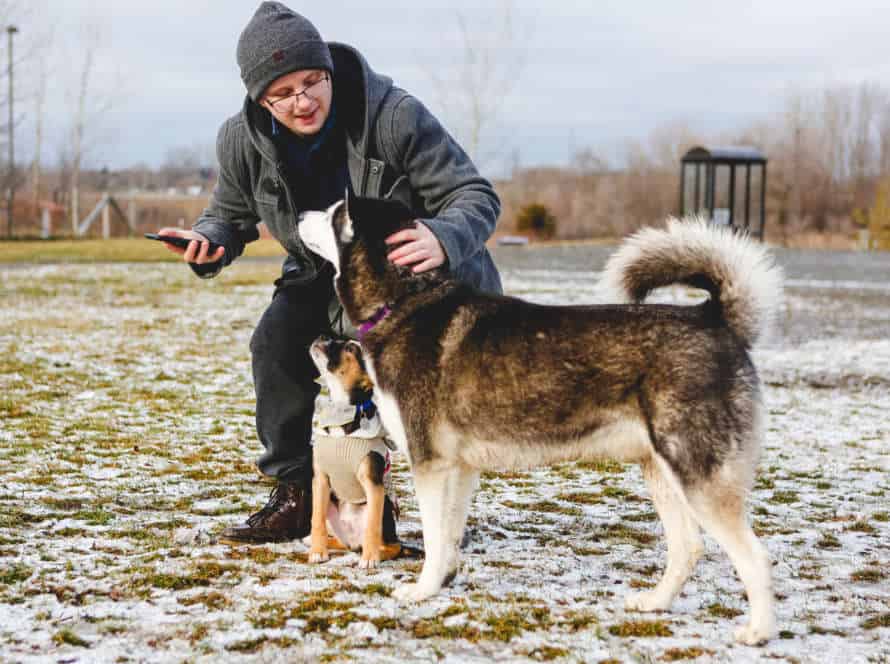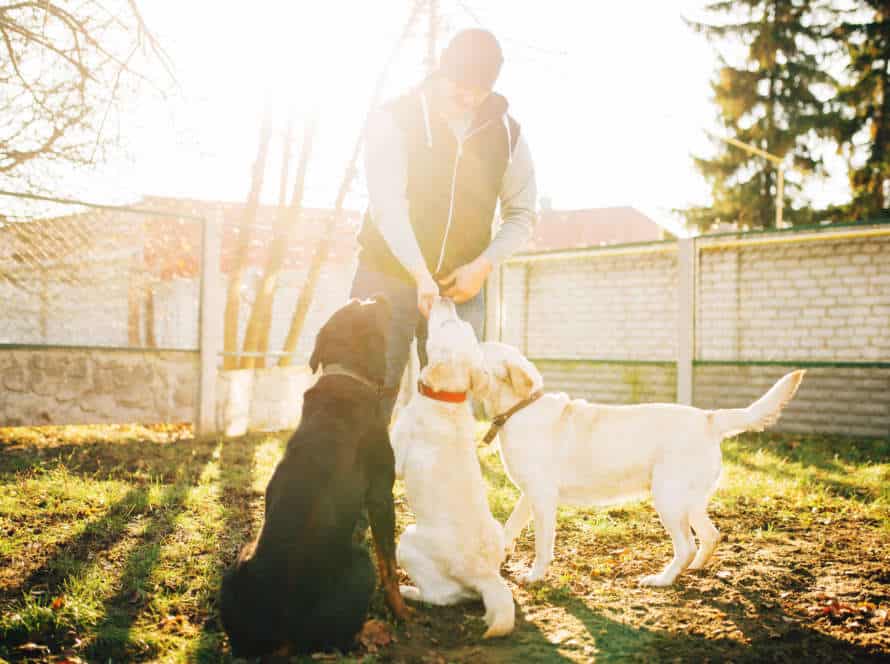Desensitization Exercises for Fearful Dogs
Desensitization exercises can help dogs with fears to feel calmer. To do this, try the following exercises:
- Counter-Conditioning: This means changing the fear response to a pleasant one. Give treats, toys, or compliments when they behave well.
- Gradual Exposure: Start with low exposure and increase as your dog becomes more comfortable.
- Distraction Training: Use a toy or treat to focus their attention away from what’s scaring them.
Be patient and consistent with these exercises. Reward good behavior. Don’t force them into situations they’re scared of.
Understanding Fearful Behaviors in Dogs
Fearful behavior in dogs can be expressed in various ways, for example cowering, barking, running away, and aggression. To help with this, it is key to first determine the cause. After this, desensitization exercises can be used to lessen the fear and improve the dog’s behavior. What are the available desensitization exercises? Let’s explore!
Causes of Fear and Anxiety in Dogs
Fear and anxiety in dogs can arise from different causes. Knowing what causes it is essential to help your dog’s behaviour.
Common triggers of fear and anxiety in dogs:
- Poor socialization: Dogs that don’t experience many people, animals, and environments as puppies are prone to be scared and aggressive around new things.
- Traumatic experiences: Being mistreated, negative reinforcement, and loud noises like fireworks or thunder can cause fearful reactions in dogs.
- Genetics: Some breeds like Chihuahuas, Greyhounds, and Border Collies have a higher risk of anxious behaviours.
Exercises like gradual exposure to triggers, positive reinforcement training, and calming supplements can help reduce your dog’s fear and anxiety.
Identifying Fearful Behaviors in Dogs
Recognizing scared behaviors in dogs is a must for understanding and treating their fears and worries. Here are some of the most popular ones to watch for:
- Shivering or quivering: Dogs may shiver or shake their body when they sense scared or threatened.
- Pacing or agitation: Dogs may move around the room or seem agitated when they feel uncomfortable.
- Hiding or needing comfort: Dogs may hide beneath furniture or look for their owner for security when they are afraid.
- Barking or snarling: Dogs may bark or snarl when they sense scared or nervous.
To manage these fearful behaviors, desensitization exercises can be beneficial. These include gradually introducing the dog to the source of their fear in a managed and positive manner, with treats and applause for good behavior. Eventually, the dog can become more used to the formerly frightening stimulus and learn to feel more secure and confident in their environment.
The Importance of Desensitization Exercises
Desensitization exercises can help dogs get over their fears and phobias. These exercises reduce anxiety and change their reaction to the trigger. Here are some of the advantages:
- Better quality of life. Fearful behavior restricts a dog’s life and causes stress. Desensitization helps them have a fuller, happier life.
- Increased self-confidence. As they get used to the trigger, their confidence rises. This makes them less likely to be scared, and more likely to explore.
- Improved relationship with humans. Desensitization exercises require patience and understanding from owners, which strengthens the bond between the dog and its human.
Done correctly, desensitization can make a big difference for fearful dogs. It’s best to get advice from a professional trainer or behaviorist.
Creating a Positive Environment for Desensitization Exercises
Desensitization exercises can help lessen fear and anxiety in dogs. For them to be effective, they must be done right. To make sure they work, creating a positive atmosphere is essential. Let’s explore how to create the ideal environment for successful desensitization exercises.
Positive Reinforcement Techniques
Positive reinforcement techniques are a great tool for desensitization exercises for anxious pooches. It’s important to use them when dealing with fear-filled dogs, to help them gain trust and courage. Here are a few tips:
- Give treats to link good experiences with training. This will teach your pup to connect training with positive events.
- Praise your dog to create a positive reinforcement atmosphere. Congratulating your dog for successes in training will help them to build trust and confidence.
- Be patient and consistent with your pup to support good behaviors. Patience and steadiness are key for creating a positive atmosphere when training.
- Utilize training sessions to make a positive and familiar atmosphere. Consistent training will help your pup become comfortable with the environment and decrease their fear.
By following these strategies, you can use desensitization exercises to help your frightened canine feel more relaxed and brave in their surroundings.
Understanding Your Dog’s Threshold Levels
Threshold levels are the point when a dog gets scared or reactive to something. Knowing your dog’s threshold levels is essential to making a positive atmosphere for desensitization activities and assisting your dog in beating their fear.
To identify your dog’s threshold level, begin with a stimulus that’s slightly below their threshold level. Then, gradually increase the intensity or exposure to that stimulus over time.
For instance, if your pup is scared of loud noises, you can start by playing a low-volume thunderstorm recording. Then, raise the volume over weeks or months.
It is critical to remain within your dog’s comfort range and never push them past their threshold. This could make them more anxious or reactive. With patience and regularity, you can slowly desensitize your dog to their triggers and help them feel more confident in new situations.
Creating a Safe and Calming Environment
Creating a safe & calming atmosphere is key for successful desensitization exercises with fearful pups. This positivity can help your dog feel relaxed & confident throughout the process. Here are some tips to craft a safe & calming environment:
- Pick a quiet, cozy spot for the exercises
- Use positive reinforcement & reward your dog for calm behavior
- Keep the area free from distractions for focus
- Don’t force your dog into scary situations
- Use desensitization exercises slowly & safely
Patience & consistency is needed for desensitization exercises. By making a calm & secure environment, you can help your pooch beat their fears & build confidence in stressful times. Pro tip: Ask a professional dog trainer to design a personalized desensitization plan for your four-legged friend.
Desensitization Exercises for Fearful Dogs
Fearful pups can find themselves stuck in sticky situations. This results in fear and even aggression. Desensitization exercises can assist owners to help their scared doggos get over the upsetting emotions related to loud noises or unfamiliar faces. This article will discuss how desensitization exercises can be so useful for dogs with fears. Plus, it will provide tips on how to desensitize your pup successfully.
Starting with Small Triggers
Desensitization exercises can help fearful dogs conquer anxiety and increase confidence. An important step is to start with small triggers.
How? Identify the trigger that makes your dog anxious, like the doorbell or someone passing. Introduce the trigger from a distance that doesn’t cause fear. Reward your dog with treats, love, or play when they act calmly. Decrease the distance as they become more relaxed. Keep repeating until your dog can stay calm around the trigger. Then, move to a more difficult one. Crucial things to remember: go slow and always be consistent and patient.
Gradually Increasing Trigger Intensity
Gradually upping the trigger intensity is a desensitization exercise for scared pooches. It helps them conquer their fears and anxieties. Here’s what to do:
- Identify triggers, like loud noises or other dogs.
- Start with a low-intensity trigger, e.g. a thunderstorm recording at a low volume, or a far-off sight of another pup on a leash.
- Encourage your dog to chill and reward them when they do.
- Slowly increase the intensity of the triggers over time. As your pup gets more comfortable, each level of intensity will be less nerve-wracking.
- Be patient and consistent with your training. Make sure your pooch feels safe and secure throughout the process.
Combining Desensitization with Counter-Conditioning
Combining desensitization with counter-conditioning is a great way to help scared pooches conquer their worries. Desensitization involves gradually introducing the dog to the frightening stimulus, while counter-conditioning is about changing the pup’s feelings about the trigger from negative to positive.
Here’s what to do when blending these methods:
- Begin with a low-intensity version of the thing that causes your pup’s fear or anxiety.
- Use positive reinforcement, like treats or praise, to make an upbeat connection with the thing that scares them.
- Little by little, increase the intensity or length of the trigger as they become more comfortable.
- Consistently use positive reinforcement to reward them for staying relaxed and calm around the trigger.
Remember to go at your pup’s pace, and don’t overwhelm them. With patience and consistency, desensitization and counter-conditioning can help your frightened pup overcome their fears and worries.
Common Mistakes to Avoid with Desensitization Exercises
Desensitization exercises are often used to diminish fear in canines. But, if done incorrectly, they can actually worsen the pup’s anxiety and amplify their fear. To make sure you get the most out of your desensitization activities, it’s essential to comprehend the usual blunders to evade. In this article, we’ll talk about the major elements to take into account when doing desensitization exercises for scared dogs.
Moving Too Quickly
Making haste is a mistake pet owners frequently make when attempting to desensitize their anxious dogs. Desensitization is done to let dogs experience feared objects or situations in a progressive way and help them overcome their worries in a positive and controlled way. Moving too quickly can make a traumatic experience and make the dog’s behavior worse.
Here are some indications you may be going too fast:
- Your dog is trembling, panting or trying to escape.
- Your dog is avoiding, hiding, or quivering.
- Your dog is aggressive, growling, or barking excessively.
To prevent quickening the process, follow these tips:
- Begin with mild stimuli and increase intensity bit by bit.
- Give treats and praise your dog for still and relaxed behavior.
- Allow your dog enough time to relax and think about their experiences between sessions.
Pro Tip: Always be mindful of your dog’s behavior and change the desensitization program if needed to make sure of lasting success.
Failing to Recognize Signs of Stress or Fear
When you’re doing desensitization exercises with a scared doggy, not being aware of signs of fear or stress is a common blunder to avoid. It’s critical to spot these signs quickly, so you don’t terrify your pup and impede their progress.
Indicators of fear or stress in canines during desensitization exercises can be:
- Excessive panting
- Drooling
- Shaking or trembling
- Whimpering or snarling
- Avoiding eye contact
- Trying to escape or hide
If you notice any of these, straight away cease the exercise and give your pup time to be composed. Only restart the exercise when they are tranquil and at ease. It’s key to carry on slowly and at your furry friend’s speed to help them conquer their worries bit by bit.
Pro tip: Endurance and constancy are the essential elements when practising desensitization exercises with scared dogs.
Using Punishment or Negative Reinforcement
Avoid punishment or negative reinforcement when it comes to desensitizing fearful dogs.
Punishing a dog in fear will create more anxiety.
Negative reinforcement, like forcing them near the fear-inducing thing, can make their fear worse.
Try positive reinforcement instead.
Reward your dog for being calm and gradually expose them to their fear in a controlled manner.
Do so while they are relaxed and have a positive feeling about the stimulus.
Gradual exposure and positive reinforcement are essential.
Get advice from a professional dog trainer or behaviorist before attempting desensitization.
Additional Resources for Helping Fearful Dogs
Dog owners often battle with their pup’s worries and stress. To help make the situation calmer, there are various desensitization techniques and other options. These may include professional veterinary behaviorists and trainers, support groups, books and online tools. In this article, we will look at these resources and see how they can help anxious dogs.
Seeking Professional Help from a Dog Behaviorist
Some dogs may be fearful. A dog behaviorist can help. There are also other resources. Desensitization exercises can be done at home. Here is how to do it:
- Start from a distance you know the dog is comfortable with.
- Slowly move closer to the trigger.
- Stop if the dog shows any fear.
- Keep going, one step at a time.
- Keep going until the dog is calm and comfortable near the trigger.
- Repeat this in different places and at different times.
With a dog behaviorist and desensitization exercises, a fearful dog can be helped to live a happier life.
Joining a Support Group for Dog Owners
Joining a support group for dog owners can be an excellent way to give emotional help and guidance. It can also make desensitization exercises for scared pups more available.
Support groups offer a space for pet owners to connect and discuss their stories. They also let pet owners obtain helpful information from others and reduce tension and fear.
Those with dogs that show phobias, stress, and anxiety may benefit from joining a support group. It is also a great way to get extra tools to help a fearful pup.
Alternatively, desensitization exercises are a good way to slowly introduce your pet to their worries. This can minimize or get rid of worry triggers. For success, take small steps, use treats to reward good behaviour, and remain consistent.
Remember, with patience, consistency, and support, you can gradually help your canine friend overcome their fears and have a content and rewarding life.
Using Online Resources for Dog Behavior Training
Struggling to train your scared pup? There are lots of online resources that can help you! Here are some of the best for training and desensitizing fearful dogs.
Online Dog Training Courses:
Web-based training has step-by-step guides to tackle specific problem behaviors. Check out the Karen Pryor Academy and the Dog Training Institute.
Pet Behavior Blogs & Websites:
Get tips, tricks, and insights into dog psychology from ASPCA and the Cesar Way.
Desensitization Exercises:
These involve gradually exposing your pup to their fears. Fearful Dogs has exercise suggestions to help them.
By using these online resources, you can help your scared dog live a happy and healthy life!
Frequently Asked Questions
Q: What are desensitization exercises for fearful dogs?
A: Desensitization exercises involve gradually exposing a fearful dog to something that scares them in a controlled and safe manner to help them overcome their fear.
Q: What are some common fears that dogs may have?
A: Dogs can be afraid of things like strangers, loud noises, certain objects or surfaces, other animals, and more.
Q: Can desensitization exercises work for all fearful dogs?
A: Desensitization exercises can be helpful for many dogs, but it’s important to work with a professional trainer or behaviorist to ensure they are done correctly and to determine if it is the best solution for your dog’s specific needs.
Q: How long does it usually take to see results from desensitization exercises?
A: Results vary depending on the severity of the dog’s fear and how consistently the exercises are done. It may take weeks or even months to see significant progress.
Q: Can I do desensitization exercises on my own, or do I need a professional trainer?
A: While there are some simple exercises that can be done at home, it is recommended to work with a professional trainer or behaviorist to ensure you are using the correct techniques and to get personalized support for your dog’s specific needs.

